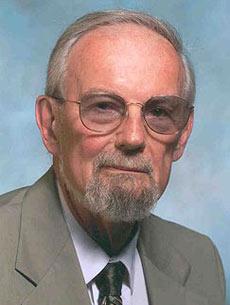
As modern civilization has grown more dependent on electric power, the need to maintain a reliable and secure power grid has become an imperative. Power grids have become larger and more complex with society's changing needs, but keeping tabs on such vast systems in real-time requires ever-more ingenious techniques. Arun Phadke and James Thorp have helped meet this imperative by creating tools for grid-wide measurements and a methodology to act on these measurements quickly, leading to dramatically improved power reliability and security. They have been at the forefront of the move to replace electro-mechanical protection systems with substantially more effective computer-based relays.
Phadke and Thorp pioneered the development of hardware and software that led to widespread industry use of a new kind of protective relay—the devices used to monitor and protect the power grid. Until the early 1980s protective relays had limited abilities. They measured voltage and current and then removed equipment from the system if it failed. Phadke and Thorp recognized that, by using a computer in place of the electro-mechanical heart of the original relay, the new device could do more than just monitor and record. Computer-based relays scattered around the grid could act as individual intelligent units to diagnose problems, communicate them to a central hub and adapt. Phadke and Thorp also tied these relays to a GPS clock—the subsequent precise synchronization helps provide a wide—area snapshot of the grid, a key tool to protect against blackouts when the power grid is under stress. The resulting immediacy of information available from all parts of the grid was a major breakthrough for monitoring and protection.
Over a span of 30 years, the two engineers—Phadke, focused on concepts and hardware and Thorp, the theoretician—helped realize the incredible potential that microcomputer-based techniques could offer power systems. Together they revolutionized the field.
James Thorp was born in Kansas City, Missouri in 1937. He earned his B.E.E. from Cornell University in 1959, and stayed to receive his M.S. in 1961 and his Ph.D. in 1962. Upon earning his doctorate, he joined the faculty at Cornell. In 1976 Thorp began a sabbatical year with Arun Phadke at the American Electric Power Service Co. to explore the applications of digital computers in high-voltage transmission substations. Thorp focused his attention on protective relays—devices that locally monitor power grids to quickly detect faults and isolate them, thus limiting equipment damage, public hazard and electricity disruption.
Today, Thorp's research continues to focus on the theoretical basis for adaptive protection and control of the complicated dynamics of large-scale power grids. In 2004 he accepted his current position as professor and department head of Electrical and Computer Engineering at Virginia Tech. Thorp holds two patents, and has written nearly 100 published papers and over 100 conference papers. He is an elected member of IEEE and NAE. He has won the PES Outstanding Power Engineering Educator Award, the CIGRE Atwood Associate Award and the IEEE PES Career Service Award.
Information as of April 2008

